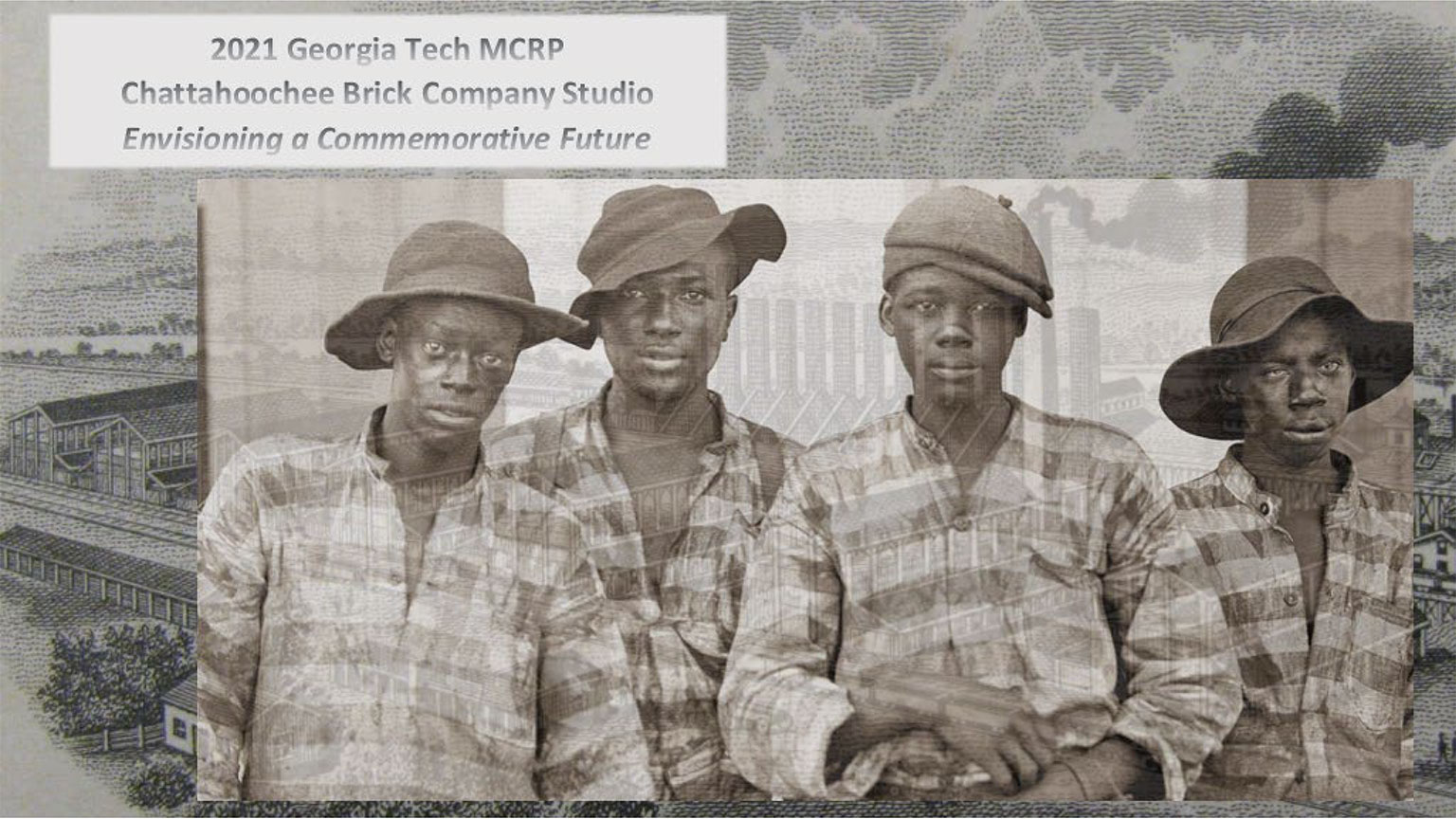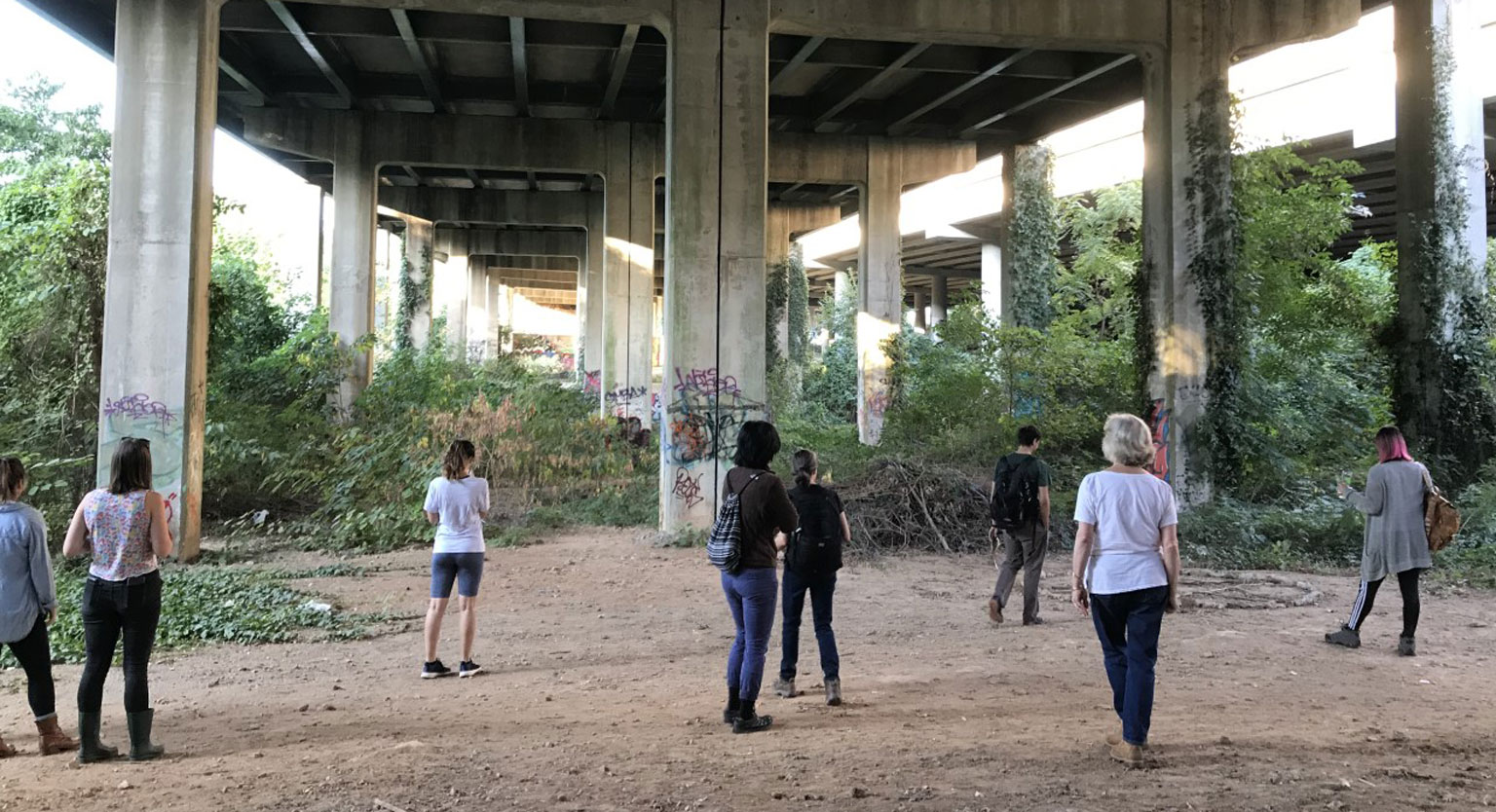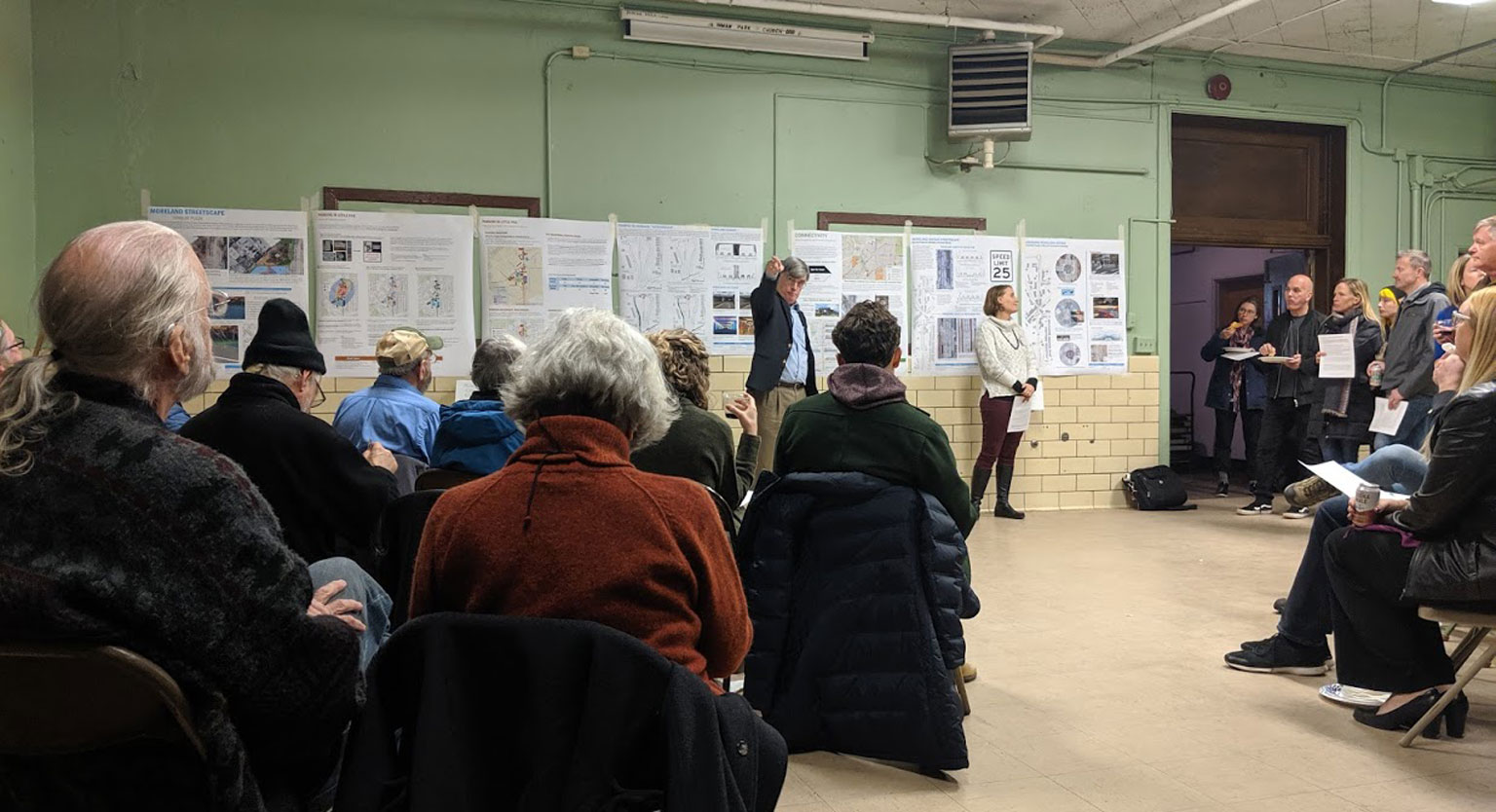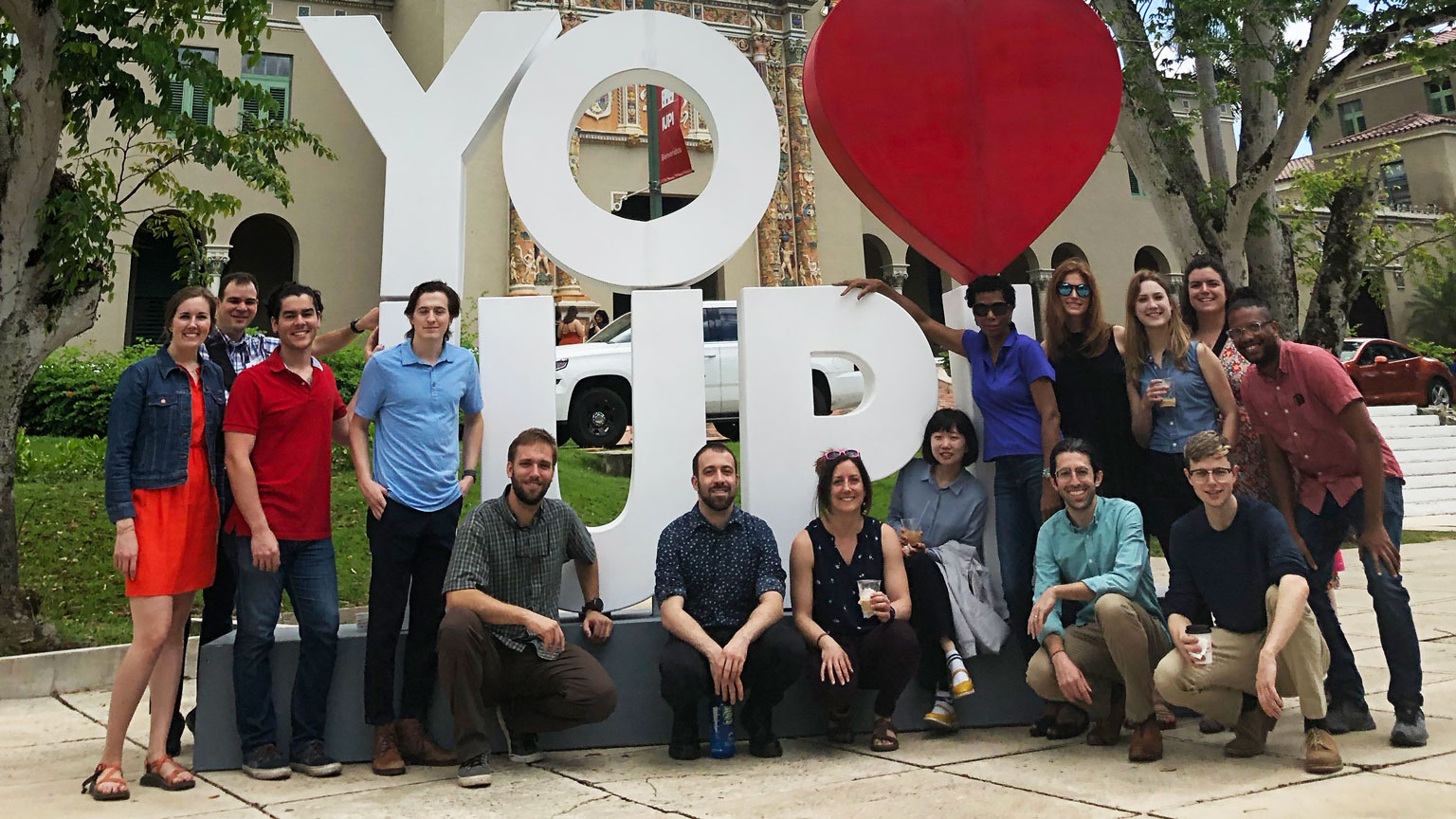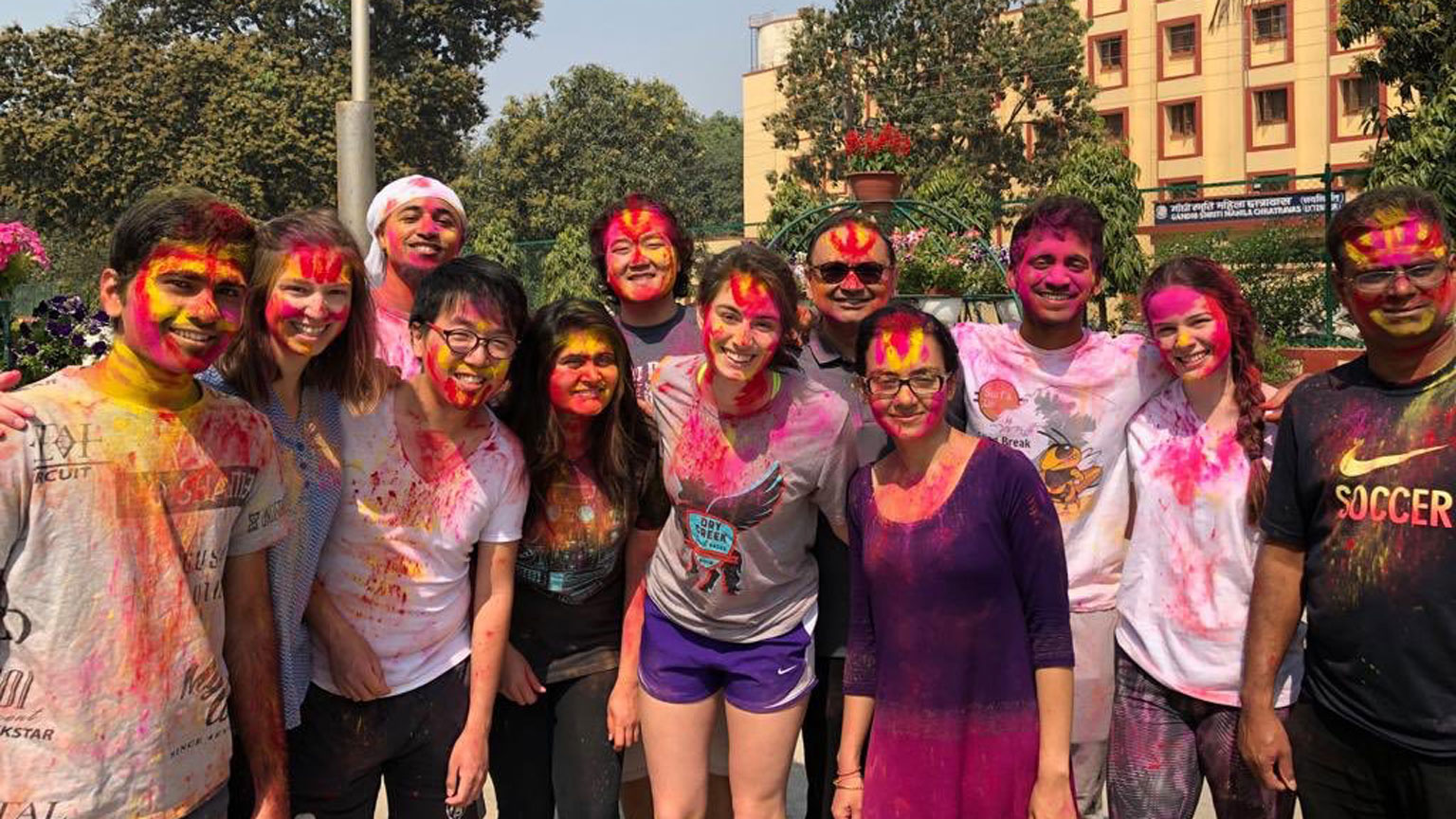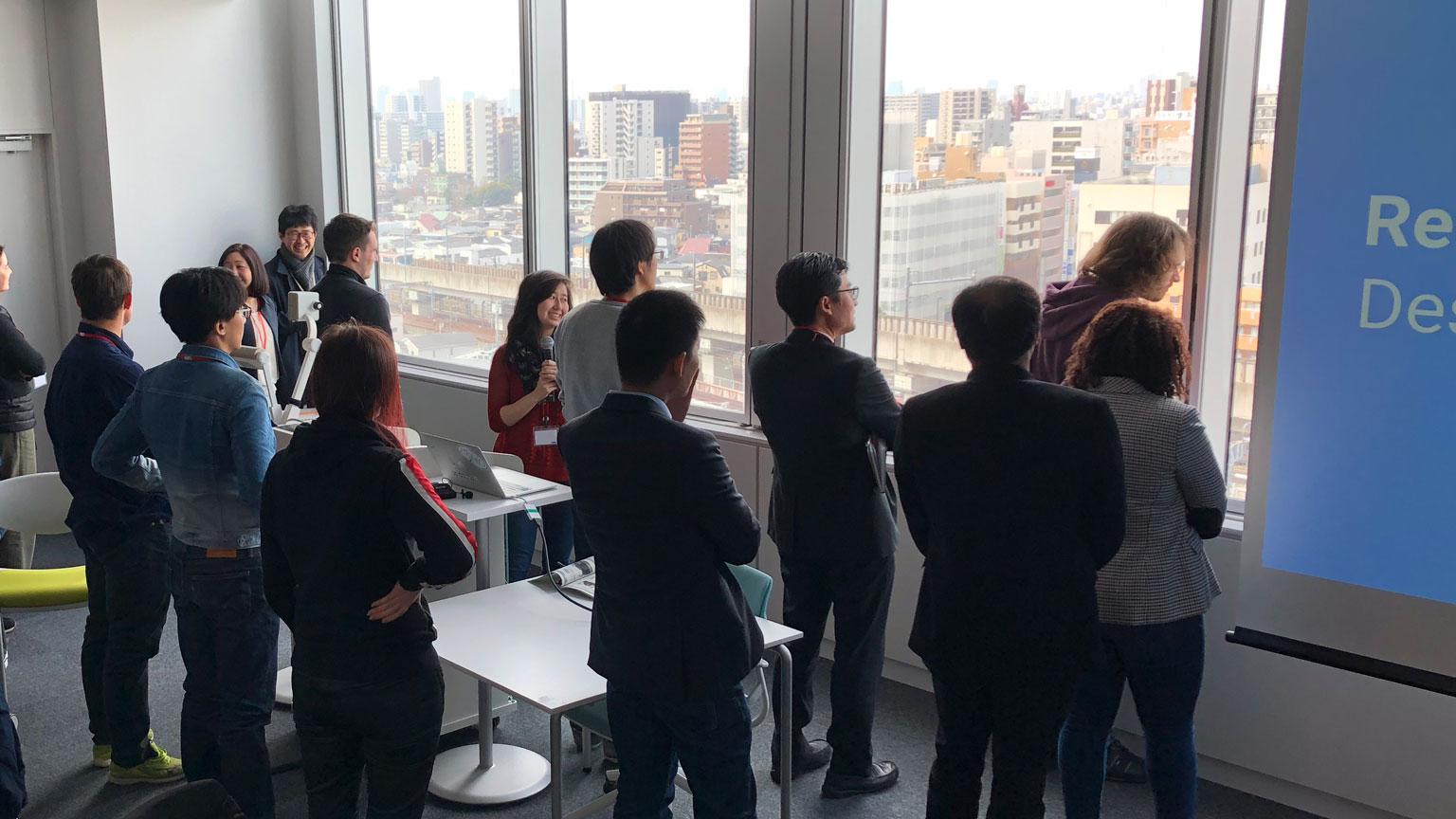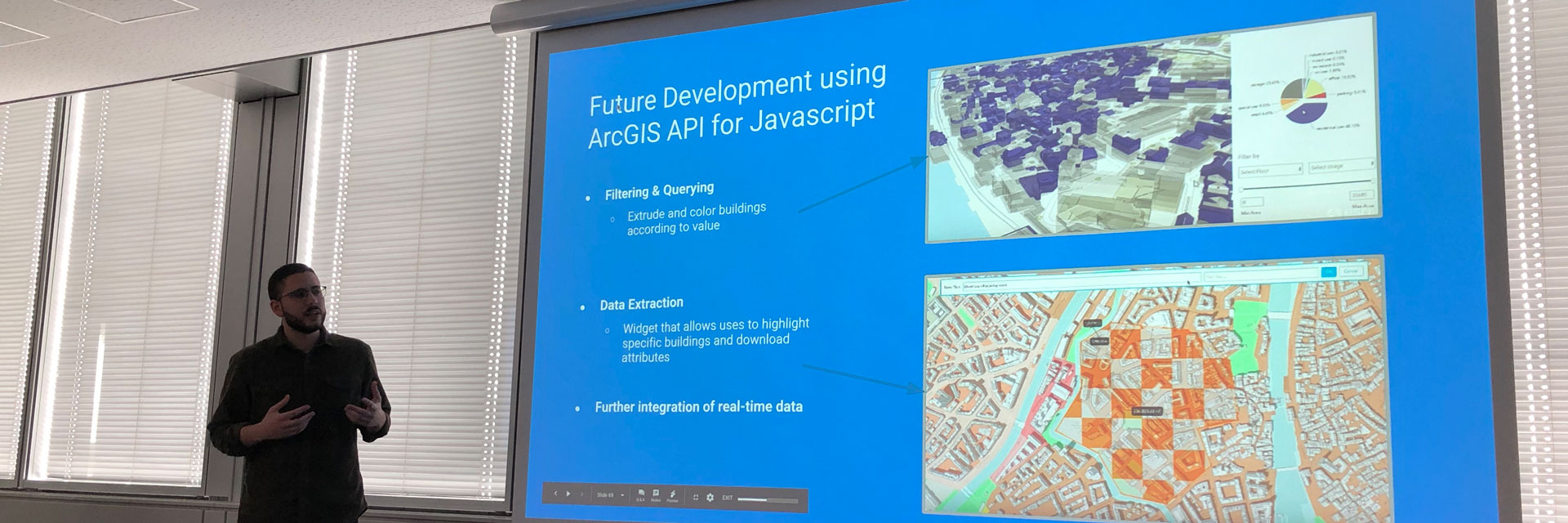
MCRP Studios
City planning studios are unique in design-focused higher education: instead of taking a studio course each semester, planning students take one capstone studio as part of requirements for Georgia Tech’s Master of City and Regional Planning degree.
Each year the School offers four or five studios in varying locations both locally and abroad.
Studios receive instruction for 12 hours a week, but students spend far more time working together outside of instruction hours.
Grace Barrett, Emily Baxter, James Burge, Melody Carter, Tyler Coyle, Brianna Davison, Seth Furman, Andrea Sherman, Andrew Smith, Michael Smith, and Andreas Wolfe. Under the supervision of Lynn Patterson.
The future of Mechanicsville has been laid out in several previous plans, but they have resulted in little additional development for the neighborhood. Rather than creating another plan, the goal of this studio was to provide an implementation framework for community level development strategies. They are based on best practices observed in other communities, both in the City of Atlanta and around the United States as well as key input from Mechanicsville stakeholders. A key goal of the studio was to create a collection of practical ideas and recommendations which can be taken and applied by the Mechanicsville community, developers, and the City.
Powder Springs: Corridor and Connectivity Plan
Darian Agnew, Claire Bleckley, Jack Denison, Grace Graszer, Jeremy Greenwald, Andrew Hanus, Clare Healy, Jiayan Ma, Eric Scott, Jonathan Sherman, and Nick Stephens. Under the supervision of Mike Dobbins.
Powder Springs charged the studio to focus its attention on two of the major access corridors into the city, Powder Springs Road from the east and Austell-Powder Springs Road from the southeast. In contemplating and then analyzing that charge, the studio placed their work into a comprehensive framework. Students took into account the work that the city has prioritized in recent years, particularly its downtown focus and connectivity to the Silver Comet trail.
A Climate Action Plan for Chapala, Mexico
Melanie Dieg, Dorraine Duncan, Symone Howard, Maggie Kelley, Alex Morrison, Pooja Rao, and Ali Yildirim. Under the supervision of Timothy Welch.
This studio was tasked to work on the issue of climate change. Climate change is the most significant challenge currently facing urban planners. To address the potential impacts of climate change, plans must be developed to reduce greenhouse gas (GHG) emissions, adapt the built environment to the new climate and ensure all citizens are treated equitably in the process. The contributors to global warming GHG and the potential impacts of climate change vary significantly between nations, states and localities. As a result, much of the climate change planning process is occurring at the local level. The Spring 2018 Chapala Studio has partnered with students and faculty at the University of Guadalajara (UdeG), Departamento de Proyectos Urbanísticos (Department of Urban Planning) to develop a climate plan for the city.
International Urban Design Studio 2018, Kyojima-Sumida District, Tokyo
Abaan Ali, Boruo Chen, Ghazaleh Coulter, Tate Davis, Chelsea Dyess, Ricardo Garcia Baez, Nathaniel Horadam, Rebekah Kim, Philippe Kimura-Thollander, Abigail Marinelli, Alyssa McKay, Isabel Sepkowitz, Jed Tanglao, Rebecca Van Dyke, James Waldon, Daniel Walls, and Yanlin Wu. Under the supervision of Perry Yang.
The International Urban Design Studio is an on-going initiative in the College of Design’s international programs and projects. This studio completed a smart city project at the Kyojima-Sumida district in Tokyo. The studio is in collaboration with the Global Carbon Project (GCP), the National Institute of Environmental Studies of Japan and the University of Tokyo.
International Urban Design Studio 2017, Urawa-Misono District, Tokyo
Abigail Aragon, Robert Binder, Karina Brasgalla, Emma French, Dontrey Garnett, Zachary Hicks, Bonwoo Koo, Zachary Lancaster, Marcela Moreno, Gabriel Jian Pang, Ellen Ray, Sean Rencurrell, Patricia Samartzis, Paul Steidl, Revathi Roopini Veriah, Wenhui Yang, and Tianran Zeng. Under the supervision of Perry Yang.
The International Urban Design Studio is an on-going initiative in the College of Design’s international programs and projects. This studio completed a smart city project at the Urawa-Misono district, one of the 2020 Olympics sites, in Tokyo. The project aimed to develop a smart and ecologically sound community as a pilot project to demonstrate how a smart city is designed, evaluated, and financed in Japan by incorporating experts and stakeholders in the areas of urban design and modeling, urban analytics for big data, IoT (Internet of Things) technology, smart home, smart mobility, eco urban performance evaluation, and green finance industry. The studio was in collaboration with the Global Carbon Project (GCP), the National Institute of Environmental Studies of Japan, the University of Tokyo and Misono’s Urban Design Center UDCMi, a governmental planning agency.
Gateway 85 Community Improvement District, Jimmy Carter Blvd., GA
Samantha Browne, Bryan Diacetis, Andyan Diwangkari, Imane El Joundi, Allison Galloway, Gordon Glass, Mishele Ijaz, Erin Johnson, Chao Meng, Sarina Sawyer, Jeevan Sanjay Senthil Kumar, and Chris Thayer. Under the supervision of Mike Dobbins.
This studio conducted a comprehensive framework visioning exercise in the fall of 2017. Building on its unique assets, the Gateway 85 Community Improvement District (CID) embarked on a set of strategies to propel the Jimmy Carter Boulevard corridor forward to identify, reveal, foreground, and celebrate its richly evolving cultural and physical assets. The Atlanta Regional Commission and the CID launched a Livable Communities (LCI) program directed at capturing the visions of what’s possible from the studio work into an LCI report to create fundable projects. The studio’s mission was to search out unifying elements for the corridor as a whole, as well as reflect and enhance the quality of the diverse places and cultures to:
- develop a comprehensive understanding of the diverse, rich, and vibrant Gateway 85 Gwinnett Community Improvement District
- create a placemaking framework to spotlight the special character of the Jimmy Carter Boulevard Corridor and its neighborhoods.
Linking Buford Highway Redevelopment with the Peachtree Greenway, Brookhaven, GA
Sigal Carmenate, Christy Dodson, Sara Douglass, Dara Epstein, Alexandra Erwin, Megan French, Mary Hirt, Chris McIntosh, Caitlin Mildner, Ian Michael Rogers, John Saxton, and Kelsey Waidhas. Under the supervision of Gary Cornell.
The sponsor and client for this studio was the City of Brookhaven, where the 3-mile long Buford Highway was identified as a rapidly transforming character area in the City’s Comprehensive Plan. The goal of the Studio was to undertake a comprehensive planning process supported by public engagement, that evaluated the transportation, housing, environmental and land use impacts of a new greenway planned to parallel a seven-lane arterial that has been the most culturally diverse corridor in Atlanta. Students grappled with issues of pedestrian safety, multi-modal connectivity, housing affordability, gentrification and urban heat islands in the production of guidelines and implementation program for the sensitive redevelopment of this important corridor. Finally, students organized and presented their recommendations to the staff, public, and elected officials.
The recommended plan envisions improvements to Buford Highway that follow the principles of Complete Streets and provides appropriate space for transit, pedestrians and bikes. It also envisions redevelopment of underutilized property in this corridor to encourage a pattern of mixed-use development that would preserve affordable housing, balance jobs and housing, and improve multi-modal connectivity by taking strategic advantage of both the highway frontage and the greenway.
I-85 Mission Zero Corridor: The Ray C. Anderson Memorial Highway.
Lindsay Brown, Elizabeth Carroll, Will Cioffi, Sarthak Dhingra, Rebecca Duncan, Sammy Shams, Imeri Kelly, Cierra McClary, and Melissa Tertichny. Under the supervision of Richard Dagenhart.
This studio team aimed to design the first highway that would show the world what infrastructural sustainability is in all its dimensions. Through a focus on people, place and technology, the highway of the future will be net zero, restorative, generative, responsible, respectful and informative – by 2040 – and in doing so it will set a new standard through the power of its impact. Mission Zero corridor, now in the first stages of implementation, promotes thoroughfares that encourage connectivity and responsible development.
International Urban Design Studio 2016: Shanghai--Disney.
Hannah Ackerman, Camilla Dartnell, Florina Dutt, Juliana Echeverri, Olivia Ginn, Elizabeth Gwinn, Taryn Heidel,Cirin Hooper, John Koon, Kim Mitchell, Shelley Price, Steven Qian, Calvin Qiu, Yong Cheng Soo, Michael Tobey, Erik Woodworth, Yihan Wu, and Angelica Yanten. Under the supervision of Perry Yang.
During this studio, students assisted the Shen-D Corporation with the creation of evaluative tools and guidelines for integratively designing a near net zero energy community just south of the forthcoming Disneyland theme park in Shanghai, China. The team consisted of urban planning, architecture, and environmental engineering students.
Clarkston Speaks
Ashley Bozarth, Anindya Debnath, Richard Duckworth, Emily Estes, Ryan Fleming, Margaret Kent, Kevin Mara, Phoebe Mayor, Grant Patterson, Austin Shelton, Deepti Silwal, Cole Smith, Nene Igietseme. Under the supervision of Anna Joo Kim.
The City of Clarkston partnered with the School of City & Regional Planning at Georgia Tech to better understand its constituents through an extensive study and outreach campaign dubbed “Clarkston Speaks.” New American Pathways, a refugee resettlement agency, worked with the School to evaluate and suggest improvements to services offered to refugees and immigrants. Over four months, Tech researchers surveyed 636 city residents and conducted focus groups and interviews with 76 NAP program participants and 3 mentors. The results of the study have implications for how the local community engages in planning and for how the city attempts to connect with Clarkston’s refugee and immigrant populations.
Smyrna Crossroads: A Vision for the Spring Road Corridor
Spandana Anand, Matt Bedsole, Jack Cebe, David DeLeon, Jordan Howard, Zahra Jeena, Jing Kong, Mia McKinney, Anna Nord, Elliot Sperling, and Sean (Shahaboddin) Toroghi. Supervised by Michael Dobbins.
Through an intensive four-month studio process, the Georgia Tech team, with feedback from many stakeholders, developed a number of recommendations intended to transform the Spring Road corridor in Smyrna, GA into a thriving live, work, and play destination for Cobb County and the Atlanta region as Smyrna prepared for the opening of the new Braves Stadium on its border. They presented findings on study background and existing conditions, and correlating city wide recommendations as well as core area recommendations.
Downtown Atlanta 2041: Autonomous Vehicles and A-Street Grids
Meredith Blakeley, Sarah Jane Bonn, Eric Goldstein, Shijia Huang, Meghan mcMullen, Lu Pang, Mikhail Payson, Blake Reeves, Stacy Scott, and Animesh Shrestha. Supervised by Ellen Dunham-Jones.
Downtown 2041 is a speculative look 25 years into the future at the opportunities available to build on parking lots and create a walkable network of Class A streets and distinctive neighborhoods around Downtown’s many assets. The design proposals are based on conversations with stakeholders, and analysis of current conditions, as well as bold assumptions about the future impact of autonomous vehicles.
Discovering Development & Conservation Opportunities in North Central Florida
Megan Barrow, Abhishek Behera, Nico Boyd, Caroline Burnette, Catherine Butler, Sarah Carnes, Alex Hanson, Joshua Haston, Shriram Lele, Melanie Metal, Chulhong Park, and Andrew Smyth.
Weyerhaeuser, a real estate investment trust and one of the world's largest private owners of timberlands, asked the studio team to develop alternative strategies for managing its 113,000-acre Lake Butler Forest properties in North Central Florida. As the region grows, pressures on Weyerhauser timberlands have intensified. The team's strategies function as a decision-making aid to guide the future development of the area, taking into account the pros and cons of their final strategies and the potential implications for adjoining landholdings and jurisdictions. In examining future development possibilities and evaluating potential alternative strategies, the team was asked to consider land use, economic development potential, urban design, transportation, and environmental factors to assess current conditions in the study area and identify relevant constraints and opportunities moving forward.
International Urban Design Studio: Designing an Urban Eco District in Asia
Cary Bearn, Guillermo Bustos, Jennifer Grimes, Robby Guthart, Dan Kim, Kevin Lanza, Hoang Luu, Maria Moersen, Ranjani Prabhakar, Stephanie Smith, and Gloria Woods. Under the supervision of Perry Yang.
Workforce Development Studio: Panning for Economic Development in the Historic Westside
Austin Albert, Avrahim Blaut, Jean-Pierre Bourget, Mindy Kao, Anna Snyder Kelly, Jane Reasoner, Stefen Samarripas, Kimberly Tatum, Anne Welch. Under the Supervision of Anna Kim (with Westside Communities Alliance).
Imagine Our Norcross: Planning for Immigrant Integration
Katie O'Connel, Jessica Doyle, Kate Wilson, Jessica Plante, Ryan Bowman, Madi Shields, Eileen Chang, Kristin Byars, John Eric Schleicher, Nathan Coursey. Fall 2015. Under the supervision of Anna Kim.
Transit Oriented Development Planning with Low Wealth Communities
Under the Supervision of Mike Dobbins.
Joseph Boyd, Abram Lueders, Kat Maines, Briana Riddell. Under supervision of Mike Dobbins.
Carly Queen, Chirag Date, Elizabeth Davis, Florina Dutt, Rishi Sanker. Under supervision of Mike Dobbins.
Reignite Eastpoint: Activate Downtown
Sarah Jane Bonn, Adeline Collot, Mingyang Li, Meghan Mcmullen, Jeshua Pringle, Blake Reeves, Yihan Wu. Under supervision of Mike Dobbins.
Marcus Ashdown, Corentin Auguin, Greg Giuffrida, Bakari Height, Wade Ingram, Charles Jiang, Jason Novsam, Ranjani Prabhakar, Elizabeth Vason, Li Yi. Under the Supervision of Mike Dobbins.
Redesigning Georgia School Siting and Design Processes: Issues, Alternatives, and Recommendations
Lindsay Anderson, Allison Bustin, Kirstin Cook, Khaliff Davis, Brian Mitchell, Steve Monnier, Katie Perumbeti, Brianna Ridnge. Under the supervision of Michael Elliot.
Memorial Drive Corridor Framework Plan
Under the Supervision of Mike Dobbins.
Connectivity and Atlanta's Core
Libbie Adams, Tharunya Balan, Bruce Battle, Meredith Britt, Sara Haas, Kyle James,Guanying Li, Jesse Zaro-Moore, Kait Morano, Marion Phillips, Taylor Tyger, Jeff Ultee. Under the supervision of Mike Dobbins andBruce Gunger. Studio Website.
The Economic Impact of Sea Level Rise on Port Savannah's Garden City Terminal & City of Darien
Carolyn Coburn, Andrew Cornwell, Joshua Gloster, Peter Hylton, John Risher, Jill Skinner, and Richard Wilson. Under the supervision of Jason Chernock.
Strategic Planning for Kaohsiung's Free Economic Zone (FEZ) and New Asian Bay Area
Johnny Aguilar, Sherene Cadet, Dawn Riley, Canon Manley, Rebecca Keffer, LiWei Xie,Sinan Sinharoy, Daniel Braswell, Lauren Pessoa. Under the supervision of Perry Yang, Nancey Green Leigh, Richard Dagenhart, and Jige Quan. Studio Website.
City of Atlanta Brownfields Area-Wide Planning Program
Seanna Berry, Dan Cotter, Alexandra Frackleton, Susannah Lee, Mackenzie Madden, Stephen McRae, Ted Ranney, Patrick Terranova, Travis Voyles. Under the supervision of Nancey Green Leigh and Nathanael Hoelzel.
Tracking the Effects of Sea Level Rise in Georgia's Coastal Communities
Gillam Campbell, Marvin Clermont, Kathryn Colberg, Richelle Gosman, Anna RoseHarkness, Amy Hugens, Paul Lorenc, Dzung Nguyen, Jennifer Yun, Joy Zhou. Under the supervision of Larry Keating and Dana Habeeb. Link to Blueprints for Successful Communities page.
Joel Anders, Tanya Bedward, Stefanie Brodie, Lauren Cardoni, Margaret Carragher, Rachel Cox, Aaron Gooze, Garrett Hyer, Amy Ingles, Lydia Kalinke, Josh Levin, SarahMcColley, Eric Phillips, Landon Reed, James Wong, Wunwun Zhang. Under the supervision of Michael Dobbins. Studio Website.
Agrarian Urbanism: A Low Energy Urban Agriculture System
Carnell Brame, Tasha Brooks, Travis Hampton, John Minter, and Dung Nguyen. Under the supervision of Perry Yang. Poster.
Stefanie Brodie, John Kent, Eugene McGuinness, Alison Pienta, Maria Roell, and Kim Wadelton. Under the supervision of Michael Dobbins.
Thaltej Village: An Incremental Approach to Urban Encroachment
Emily Brown, Allison Buchwach, Ryan Hagerty, Mary Richardson, Laura Schultz, and Bin Yan. Under the supervision of Michael Dobbins.
Planning and Development Strategies for Holy Trinity, Alabama
Brijith Alex, James Bikoff, Wesley Brooks, Michael Hellier, M. Avi Kimmel, Victoria Lee, Audrey Leous, Kevin Mahoney, Michelle Mondragon, Min Na, John Rhodes, Jr., Drew Swope, Hans Williams, Cara Woods, Keenan Yates, and David Yoke, Under the supervision of Michael Dobbins.
Ecological Urbanism Studio: Global Benchmarking for Low Carbon Urban Design
View summary of presentation with graphics and report summary. Under the supervision of Perry Yang.
Agrarian Urbanism: A Low Energy Urban Agriculture System
Carnell Brame, Tasha Brooks, Travis Hampton, John Minter, and Dung Nguyen. Under the supervision of Perry Yang. Poster.
Stefanie Brodie, John Kent, Eugene McGuinness, Alison Pienta, Maria Roell, and Kim Wadelton. Under the supervision of Michael Dobbins.
Thaltej Village: An Incremental Approach to Urban Encroachment
Emily Brown, Allison Buchwach, Ryan Hagerty, Mary Richardson, Laura Schultz, and Bin Yan. Under the supervision of Michael Dobbins.
Planning and Development Strategies for Holy Trinity, Alabama
Brijith Alex, James Bikoff, Wesley Brooks, Michael Hellier, M. Avi Kimmel, Victoria Lee, Audrey Leous, Kevin Mahoney, Michelle Mondragon, Min Na, John Rhodes, Jr., Drew Swope, Hans Williams, Cara Woods, Keenan Yates, and David Yoke. Under the supervision of Michael Dobbins.
Johanna McCrehan, Philip Schaeffing, and Elizabeth Ward. Under the supervision of Ellen Dunham-Jones.
Ecological Urbanism Studio: Global Benchmarking for Low Carbon Urban Design
View report summary of presentation with graphics and report summary. Under the supervision of Perry Yang.
A Web Application Approach to Street Sign Inventory Development
Dave Barg, Taylor Baxter, Stan Bouckaert, Matt DeVeau, Lucrecia Martinze, Micah Stryker, Marshall Willis, and You Zhou. Under the supervision of Jiawen Yang.
Action Plan for the Fort McPherson Community
Rati Akash, Zachary Adriaenssens, Kia Ball, Leslie Caceda, Carlos Campo, Chris Faulkner, Carolyn Knabel, Jenna E. Lee, Moki Macías, Drew Murray, Susan Prater, Neela Ram, Ruma Ram, Andrea Rattray, Stephanie Wansley. Under the supervision of Michael Dobbins.
Atlanta NPU-G Community Master Plan: A Live-Work-Play Approach to Upward Mobility
Colleen Allen, Tom Caiafa, Jesse Clark, Sarah Gitt, Kenneth Liwag, Emily McClendon, Andy McBurney, Alek Pochowski, Evan Robertson, and Erin Rosintoski. Under the supervision of Nancey Green Leigh.
Obesity and the Built Environment
Robert Buckley, Shannon Griffen, Olaava MacKenzie, Rebecca Man, Yi Lin Pei, Ashley Rivera, Joseph Staubes, Kyungsoon Wang, Lin Wang, Jin Xu, and Jaeho Yoon. Under the supervision of Jaiwen Yang. Summary here; full report sequestered.
International Urban Design Studio: Shanghai 2010
Stuart Dryden (MCRP '10), Renato Ghizoni (M.ARCH/MCRP '10), Drew Getty (MCRP '10), Louis Johnson (MS-UD 2010), Paul Jones (M.ARCH/MCRP '10), Diana Murphy (M.ARCH/MCRP '10), Edward Morrow (MCRP class of '11), Julie Sanders (M.ARCH and MCRP '10), Reginald Tabor (MS-UD '10), Claire Thompson (MS-UD/MCRP '10), Ross Wallace (M.ARCH/MCRP '10), Galen Williams (MS-UD '10), Howard Wang (M.ARCH '10). Under the supervision of Richard Dagenhart.
The Stadium Neighborhoods Tad: An Urban Design Strategy for Stakeholder Decisions
Cassie Branum (MSUD & MCRP ’10), Jason Combs (MCRP & MSUD ’10), Dan Hawthorne (MARCH ‘10), Justin Chapman (MCRP ‘10) and three seniors: Hrach Burtoyan, Kristin Kellogg, and Taylor Smith (BS ARCH '10). Under the supervision of Richard Dagenhart.
Industrial Land and Sustainable Industry in the City of Atlanta
Kale Driemeier, Nathan Hoelzel, Rahul Jain, Jodi Mansbach, Edward Morrow, Charlie Moseley, Shelley Stevens, ErmiZayas. Under the supervision of Nancey Green Leigh.
A Sustainable Development Plan for the Proposed Friendship Village
Claudius Anderson, Chelsea Arkin, Philip Blaiklock, Cassie Branum, David Caimbeul, Thomas Drake, Joe Collums, Lane Conville, Jessical Doyle, Thomas Drake, Binh Duong, Maria Kovacheva, Nathan Lawrence, Aria Ritz Finkelstein, John Skach, and Tasheika Tucker. Under the supervision of Richard Dagenhart and Nancey Green Leigh.
Branum Cassie Branum, Finkelstein, Aria Finkelsten, Thompson, Claire Thompson, Caimbeul, David Caimbeul, Binh Duong, Maria Kovacheva, Alexis Faraci, Heather Hussey, Robert Thorn, Jeremy Wilhelm, and Joseph Winters. Under the supervision of Richard Dagenhart and Perry Yang.
Strategies for Neighborhood Recovery: High Point, Joyland and Chosewood Park, Atlanta
Won S. Lee, Leonard Brandon, Kirsten Berry, Nicholas Mullins, Alyssa Sinclair, Christine Mager, Brooks Smith, Mary Beth Hawes, Troels Adrian, Yung San Lee. Under the supervision of Harley Etienne.
Newton County Land Conservation Plan
Molly Allen, Sarahjoy Crewe, David D'Onofrio, Aaron Fowler, Elizabeth Hagan, Elizabeth Hight, Marisa Lang, Andrea Lytle, Brian Smart, Matthew Tester. Under the supervision of Randall Roark.
Vacant Housing and Economic Development in the English Avenue Neighborhood of Atlanta
Brook Brandon, Stephen Causby, A. "Reggie" Delahanty, Brian Jacobs, Elisabeth Kulinski, Michelle Larsen, Jessie Lawrence, Carl Mikalonous, Heather McCarey, Reginald McClendon, Steven Simms, and Brett Wearting. Under the supervision of Harley Etienne.
Collier Village
Jaimye Bartak, David Carter, Shabana Charaniya, Bradley David, Glenn Frankel, Ilan Guest, Victor Helin, Colleen Kiernan, Thomas McCracken, Michael Morton, Holden Spaht, Joshua Scott Stephens, Jing Xu. Link to report prepared by the Georgia Conservancy based, in part, on the studio work.
Lindbergh-LaVista Corridor Coalition
JP Alexander, Nathan Barnett, Patrick Bradshaw, Jason Combs, Nancy Galewski, Blair Garvvey, Mary Kaiser, KaleahLambert, Andrew Mayronne, Eric Pfeifer, Jessica Rafferty, Zack Ray, Mathew Roe, Jason Vargo, Jared Yarsevich. Link to report prepared by the Georgia Conservancy based, in part, on the studio work.
Piedmont Heights
Jason Chernock, Stephen Conschafter, Dana Habeeb, Jennifer Harper, Kyu Hwang, Xandon Keating, Young Kim, Steve Lewandowski, Jennifer Indech Nelson, Melanie Nelson, Jerry Page, Laurel Paget-Seekins, Sharon Qin, Alexa Stephens, Ada Sung, Talya Trudell, Kai Zuehlke. Link to report prepared by the Georgia Conservancy based, in part, on the studio work.
Susan Cohn, Marc Dixon, Miguel Granier, Kenwin Hayes, Rick Liu, David Pierce, and Samantha Singer. Under the supervision of Nancey Green Leigh, John Skach, and Richard Dagenhart.
Jeri Cerere, Andrea Foard, Nathan Mai-Lombardo, Jeff Owen, Jay Perlmutter, Ryan Sheriff, and Jon Tuley. Under the supervision of Nancey Green Leigh, John Skach, and Richard Dagenhart.
Pittsburgh
Saskia Benjamin, John Rees, Vani Herlekar, Brian Stockton, Chirayu Bhatt, Scott Brown. Link to report prepared by the Georgia Conservancy based, in part, on the studio work.
Middle Chattahoochee Watershed
Joanna Arthur Wilkins, Nita Bhave, Danielle Bower, Brad Calvert, Kathryn Frank, Trupti Kalbag, Jonathan Lewis, Jane Lim, Carrie Riordan, David Schilling, Kimberly Zimmerman. Link to report prepared by the Georgia Conservancy based, in part, on the studio work.
Toccoa and Stephens County
Kris Anderson, K. Lynn Berry, Christian Gable, Woody Giles, Brittain Skinner, Matt Vivian. Link to report prepared by the Georgia Conservancy based, in part, on the studio work.
